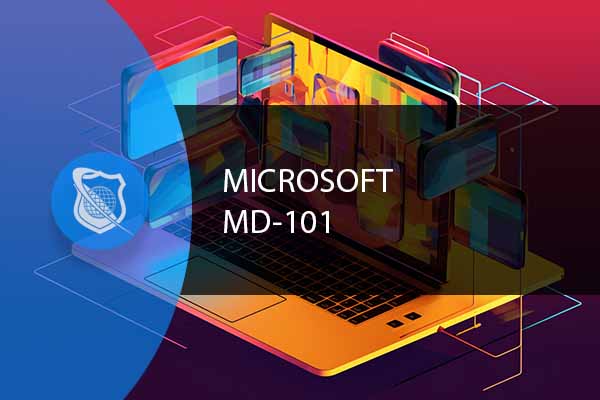Introduction To Tech Support Interview Questions
Getting that Tech Support Interview for a role at a company that utilizes Windows Desktops and Windows Servers is an exciting opportunity. As you prepare to showcase your technical prowess and problem-solving skills, it’s essential to anticipate the interview questions that could come your way. In this blog, we’ll explore typical interview questions for this role and provide insightful answers to help you stand out and ace that interview.
Potential Interview Questions for A Tech Support Specialist
1. Question: Can you explain your experience with Windows Desktop operating systems and Windows Servers?
Answer: Certainly. I’ve had hands-on experience with various versions of Windows Desktop operating systems, including Windows 7, 8, and 10. I am well-versed in performing installations, updates, and troubleshooting common issues. Additionally, I have managed Windows Servers, such as Windows Server 2016 and 2019, configuring roles and features, maintaining Active Directory, and ensuring proper security measures are in place.
2. Question: How would you troubleshoot a user’s complaint of slow system performance on their Windows Desktop?
Answer: To address slow system performance, I would follow these steps:
- Check Task Manager to identify resource-hungry processes.
- Scan for malware or viruses using updated antivirus software.
- Optimize startup programs by disabling unnecessary ones.
- Clear temporary files and perform disk cleanup.
- Ensure Windows Updates are up-to-date.
- If necessary, upgrade hardware components like RAM or storage.
3. Question: Imagine a scenario where a user is unable to access a shared folder on a Windows Server. How would you approach this issue?
Answer: In such a scenario, I would:
- Verify network connectivity between the user’s system and the server.
- Check permissions on the shared folder to ensure proper access rights.
- Review event logs on the server for any error messages related to the shared folder.
- Ensure that the server’s file and printer sharing services are running.
- If necessary, troubleshoot DNS settings to ensure proper name resolution.
4. Question: How would you assist a user who has forgotten their Windows login password?
Answer: I would:
- Suggest they attempt any alternate passwords they might have used.
- Ask if they’ve enabled password hints, which could provide a clue.
- If those options fail, guide them through the Windows password reset process using password recovery tools or an administrator account.
- Stress the importance of password management to prevent future issues.
5. Question: Can you discuss your experience with remote desktop troubleshooting?
Answer: Certainly. I’ve handled remote desktop troubleshooting by utilizing tools like Remote Desktop Protocol (RDP) and remote assistance software. I’ve guided users through setting up RDP connections, resolving connectivity issues, and assisting with software configuration remotely. Communication skills are crucial in remote troubleshooting to ensure clear instructions are provided.
6. Question: How would you troubleshoot a “Blue Screen of Death” (BSOD) error on a Windows Desktop?
Answer: When encountering a BSOD error, I would:
- Note down the error code displayed on the screen.
- Restart the system and enter Safe Mode to prevent further crashes.
- Check for recently installed hardware or software causing conflicts.
- Update or roll back device drivers that might be causing the issue.
- Perform memory and disk diagnostics to identify hardware problems.
7. Question: What steps would you take to ensure data security on Windows Servers?
Answer: To ensure data security on Windows Servers, I would:
- Implement robust access control mechanisms through Active Directory.
- Regularly apply security patches and updates.
- Configure firewalls and intrusion detection systems.
- Enable auditing and monitoring of server activity.
- Implement data encryption for sensitive information.
8. Question: How do you handle a situation where a Windows Server becomes unresponsive?
Answer: When a Windows Server becomes unresponsive, I would:
- Attempt to remotely access the server using management tools.
- If remote access fails, contact the data center or on-site staff for physical intervention.
- Analyze event logs to identify potential causes, such as resource exhaustion or hardware failures.
- Restart the server if necessary, while taking care to ensure minimal impact on services.
9. Question: Explain your experience with Active Directory management.
Answer: I have experience with Active Directory tasks such as user and group management, organizational unit (OU) structure design, and group policy configuration. I’ve also performed user authentication and account password resets through Active Directory.
10. Question: How do you handle a situation where a user’s Windows Desktop won’t boot?
Answer: To address a non-booting Windows Desktop, I would:
- Attempt to boot into Safe Mode to diagnose startup issues.
- Run startup repair tools to fix corrupted boot files.
- Check hardware components, including RAM and storage, for failures.
- Utilize recovery options such as system restore or booting from a recovery disk.
- If needed, back up important data before performing more extensive troubleshooting.
11. Question: Can you discuss your familiarity with Group Policy management?
Answer: I am well-versed in configuring Group Policies to enforce security settings, application restrictions, and user configurations across a network. I’ve used Group Policy Management Console (GPMC) to create and manage policies effectively.
12. Question: How do you handle a situation where a Windows Server experiences disk space issues?
Answer: To address disk space issues on a Windows Server, I would:
- Identify and clear temporary files, logs, and unnecessary data.
- Use built-in disk cleanup tools or third-party utilities.
- Analyze large files or folders consuming disk space.
- Consider expanding disk capacity or relocating data to larger drives.
13. Question: How would you guide a user through setting up a network printer on their Windows Desktop?
Answer: I would:
- Instruct the user to locate the printer’s IP address or hostname.
- Guide them to the “Devices and Printers” section in Control Panel.
- Add a new printer, select network printer, and input the printer’s IP or hostname.
- Install the required driver if prompted, and test a print job for verification.
14. Question: Describe your approach to managing user accounts on Windows Servers.
Answer: I manage user accounts on Windows Servers by creating, modifying, and disabling accounts based on user roles and permissions. I ensure strong password policies are enforced and regularly review user access to maintain security.
15. Question: How do you stay updated with the latest Windows Desktop and Server technologies?
Answer: I stay updated by following official Microsoft blogs, attending webinars, and engaging in online communities. I also experiment with new technologies in lab environments to gain hands-on experience.
16. Question: Can you provide an example of a challenging technical issue you’ve successfully resolved?
Answer: Certainly. I once encountered a case where a Windows Server was experiencing intermittent network connectivity. After thorough troubleshooting, I identified that a malfunctioning network switch was causing the issue. I replaced the switch and configured network settings, restoring stable connectivity.
17. Question: How do you ensure a seamless transition when migrating user data to a new Windows Desktop?
Answer: To ensure a smooth transition during user data migration, I:
- Back up the user’s data to a secure location.
- Set up the new Windows Desktop, ensuring it’s updated and configured.
- Restore the user’s data from the backup, validating its integrity.
- Test applications and data accessibility to verify a successful migration.
18. Question: Describe your familiarity with Microsoft Exchange Server.
Answer: I have experience with Microsoft Exchange Server, including mailbox management, user configurations, and email distribution lists. I’ve also handled troubleshooting tasks related to email delivery and connectivity issues.
19. Question: How do you approach software deployment and updates on Windows Desktops?
Answer: I deploy and update software using various methods:
- Group Policy software deployment for network-wide installations.
- System Center Configuration Manager (SCCM) for large-scale software management.
- Windows Update for critical updates and security patches.
- PowerShell scripts to automate software installations.
20. Question: Can you discuss your experience with remote desktop tools and protocols?
While I haven’t had direct experience with remote desktop tools and protocols in a professional setting, I am eager to learn and adapt quickly to new technologies. I believe that my strong technical foundation and ability to learn on-the-go will enable me to grasp remote desktop concepts efficiently. I am excited about the opportunity to gain hands-on experience in this area and contribute effectively to the team’s objectives.
Ensure You Have The Answers
Be well prepared for your interview with our Microsoft MD-101: Managing Modern Desktops. With on-demand videos, practice tests, flashcards, games and more, you’ll be more prepared than ever before.
It’s More Than Just Knowing Answers: Additional Interview Tips
Here are some general interview tips that can help you make a positive impression during your interview:
1. Research the Company – Familiarize yourself with the company’s mission, products, services, and recent news. Tailor your answers to show that you’ve done your homework.
2. Understand the Role – Review the job description and requirements to ensure you understand what the role entails. Be prepared to discuss how your skills and experiences align with the position.
3. Practice Common Questions – Prepare answers for common interview questions like “Tell me about yourself,” “Why do you want to work here?” and “What are your strengths and weaknesses?” Practice your responses to sound confident and concise.
4. Showcase Your Achievements – Prepare specific examples of how you’ve contributed to previous roles or projects. Highlight achievements, challenges you’ve overcome, and the impact of your work.
5. Use the STAR Method – When answering behavioral questions (those that ask about specific situations you’ve faced), use the STAR method: Situation, Task, Action, Result. This structure helps you provide detailed and structured responses.
6. Dress Appropriately – Choose professional attire that aligns with the company’s dress code. When in doubt, it’s better to be slightly overdressed than underdressed.
7. Arrive Early – Aim to arrive 10-15 minutes before the interview. This shows punctuality and allows you to compose yourself before the interview begins.
8. Bring Copies of Your Resume – Even if the interviewers have copies, bringing your resume shows preparedness and can be helpful for reference during the discussion.
9. Prepare Questions – Have thoughtful questions prepared to ask the interviewers. Questions about the role, team dynamics, and company culture demonstrate your interest and engagement.
10. Maintain Positive Body Language – Offer a firm handshake, maintain eye contact, and sit up straight. These cues convey confidence and professionalism.
11. Listen Actively – Pay attention to the interviewer’s questions and respond thoughtfully. Avoid interrupting and ensure you fully understand before providing an answer.
12. Highlight Transferable Skills – If you’re transitioning from another field or have limited direct experience, emphasize transferable skills like problem-solving, teamwork, and adaptability.
13. Stay Positive – Maintain a positive attitude throughout the interview. Even if discussing challenges, focus on how you approached them constructively.
14. Be Concise – Keep your responses concise and relevant. Avoid rambling or going off-topic.
15. Express Enthusiasm – Show genuine enthusiasm for the role and the company. Let your passion for the position shine through your answers.
16. Send a Thank-You Note – After the interview, send a thank-you email to the interviewers. Express gratitude for the opportunity and reiterate your interest in the position.
Remember, interviews are not only about showcasing your skills but also about demonstrating your personality and fit within the company culture. Be yourself, stay confident, and focus on presenting your best self. Good luck!
Up Your IT Skills
This comprehensive 3 course training series provides you with on-demand training for CompTIA A+, Network+ and Sec+. Not only would you be ultra prepared to ace any tech support interview but you’ll be well on your way to CompTIA certifications.
Conclusion
As you prepare for your interview as a Technical Support Specialist for Windows Desktops and Servers, these sample questions and answers should give you a solid foundation to respond confidently and effectively. Emphasize your technical proficiency, problem-solving abilities, and experience with Windows systems to demonstrate your suitability for the role. By showcasing your expertise, you’re well on your way to impressing the interview panel and securing that coveted position.
FAQ’s
How do you approach troubleshooting a Windows desktop that won’t boot?
When faced with a Windows desktop that won’t boot, I start by assessing whether the issue is hardware or software related. For hardware, I check the power supply, cables, and peripherals. For software, I attempt to boot in Safe Mode to diagnose if a recently installed application or driver is causing the issue. I also use the Windows Recovery Environment (WinRE) to perform startup repair, check disk for errors, or restore the system from a previous backup if necessary. Understanding the importance of minimizing downtime, I prioritize quick diagnostics and clear communication with users throughout the process.
What steps would you take to resolve a connectivity issue on a Windows server?
Resolving connectivity issues on a Windows server involves several key steps. Initially, I verify the server’s physical network connections and check the status of network adapters in the Device Manager. I then use command-line tools such as ipconfig, ping, and tracert to diagnose network configurations and connectivity. If these steps don’t resolve the issue, I examine the server’s firewall settings and routing configurations. Ensuring secure and reliable network connectivity is paramount, so I also review security patches and updates that might affect network performance.
Can you explain the process of creating and managing user accounts in Active Directory on Windows servers?
Managing user accounts in Active Directory involves using the Active Directory Users and Computers (ADUC) snap-in. To create a new user account, I navigate to the appropriate organizational unit (OU), right-click, and select ‘New’ > ‘User’. I then fill in the necessary user details and set an initial password. Managing user accounts includes configuring properties such as group memberships, login scripts, and home directories. For security and compliance, I regularly review user accounts for necessary updates or deactivations, ensuring adherence to best practices in identity and access management.
Describe how you would handle a security breach on a Windows system.
Handling a security breach on a Windows system requires immediate and strategic action. First, I isolate the affected system to prevent further spread of the breach. I then initiate a thorough investigation to identify the breach’s source and scope, using tools like Windows Event Viewer and network monitoring solutions. It’s critical to communicate effectively with stakeholders about the breach’s impact and remediation steps. After addressing the immediate threat, I review and enhance security policies and measures, such as updating antivirus software, patching vulnerabilities, and reinforcing user education on security practices.
How do you ensure the regular backup and recovery of data on Windows desktops and servers?
Ensuring regular backup and recovery involves setting up a robust backup strategy using Windows Backup or third-party solutions. I configure scheduled backups to run during off-peak hours, targeting critical data and system configurations. It’s important to store backups in multiple locations, including off-site or in the cloud, to protect against local disasters. Regularly testing recovery procedures is also crucial to ensure data can be quickly restored in an emergency. By maintaining a disciplined approach to backup and recovery, I aim to minimize data loss and ensure business continuity.
Preparing for an interview as a Windows Technical Support


























